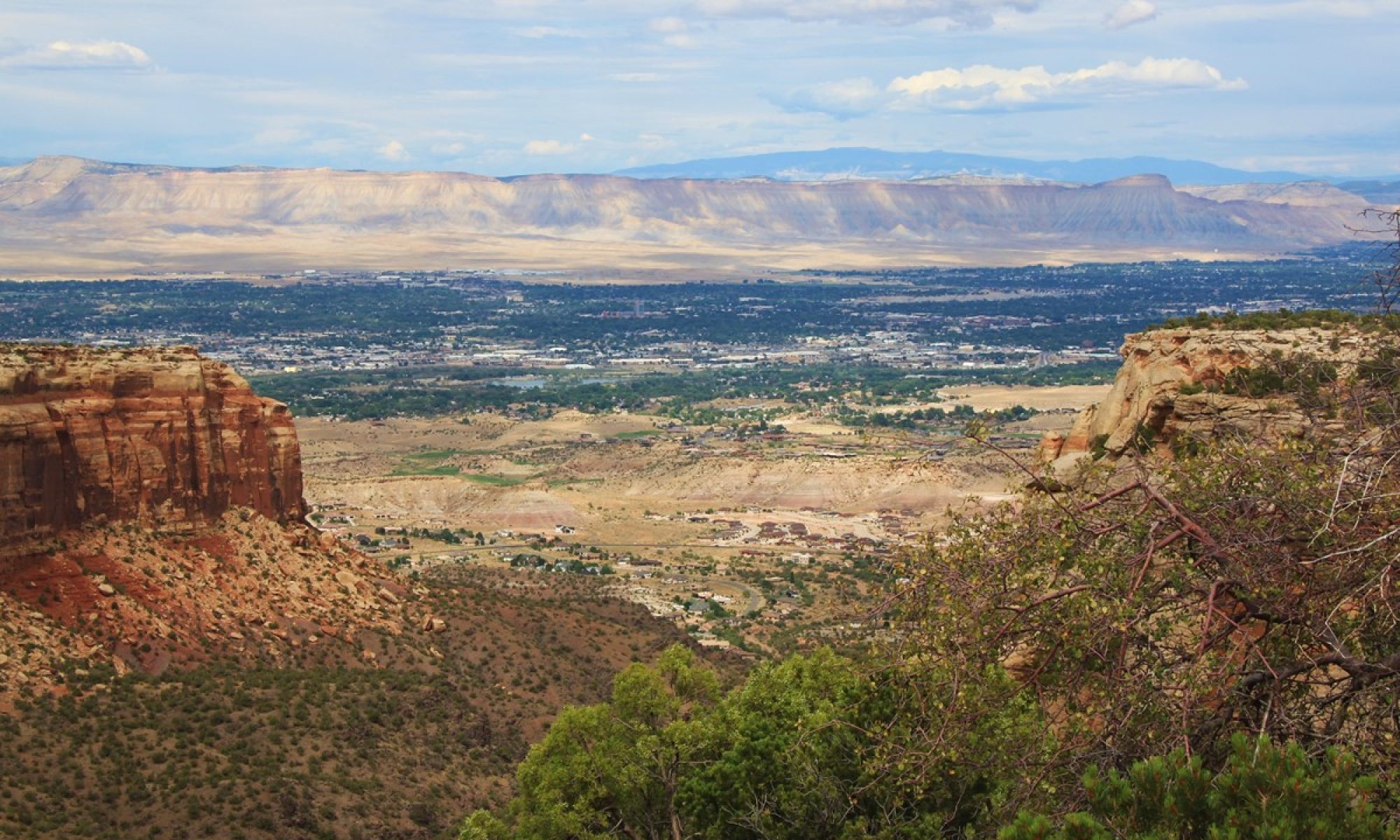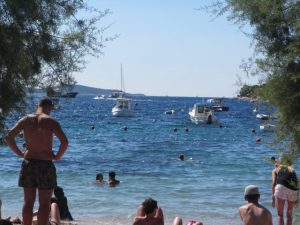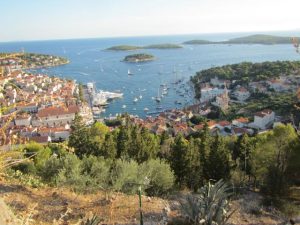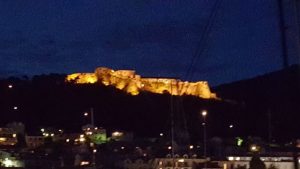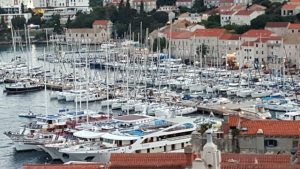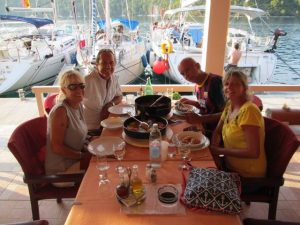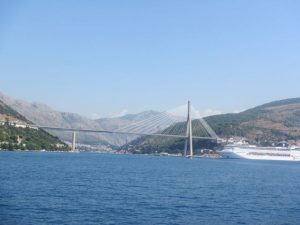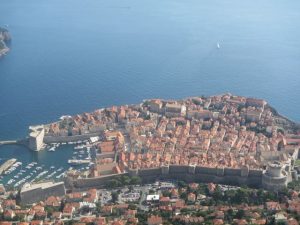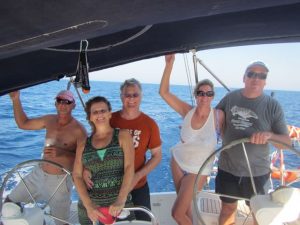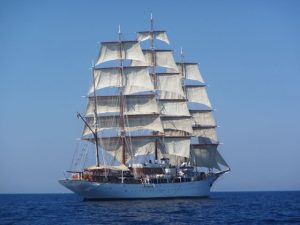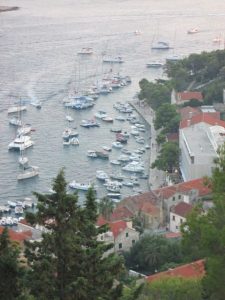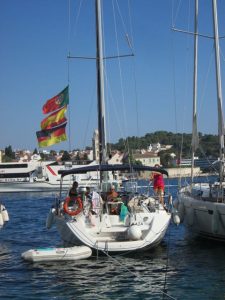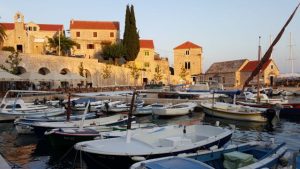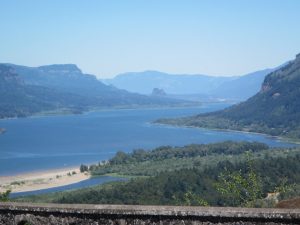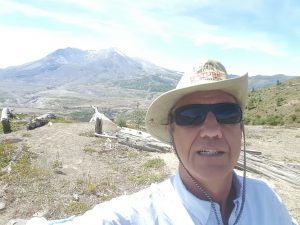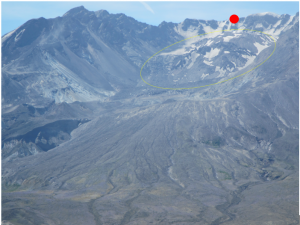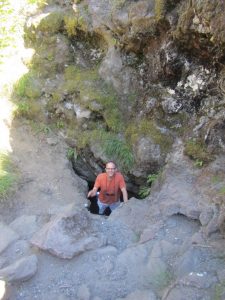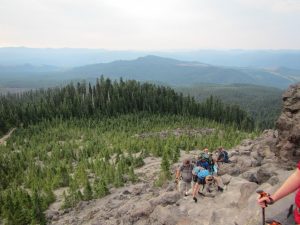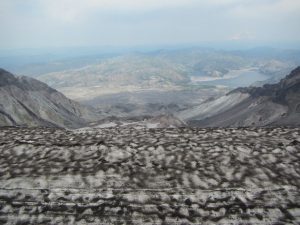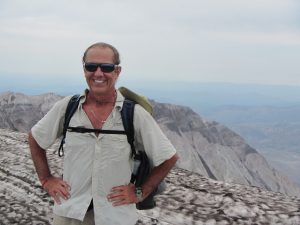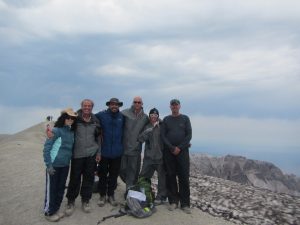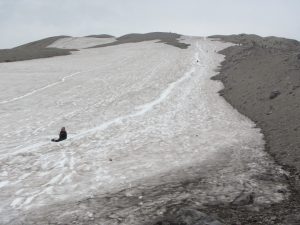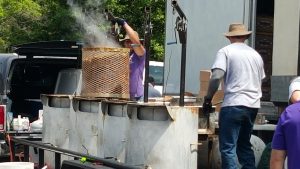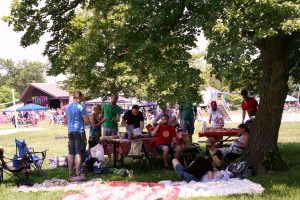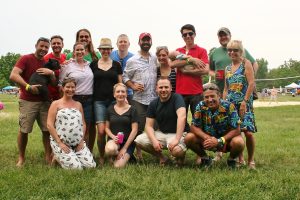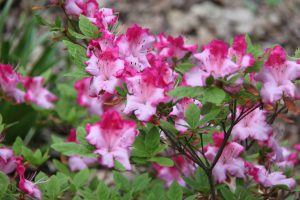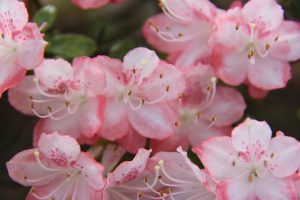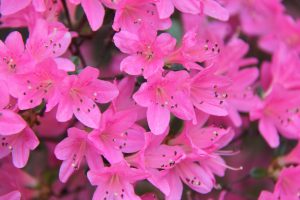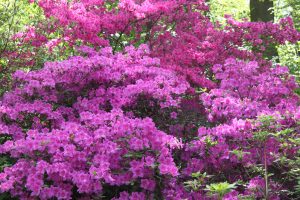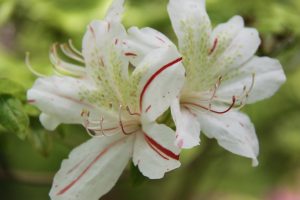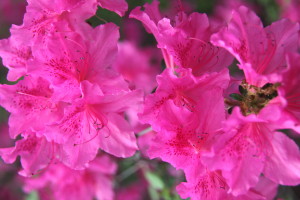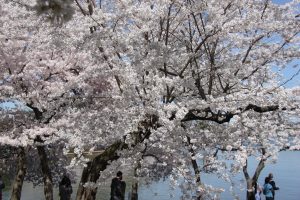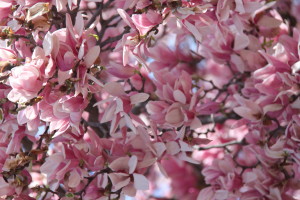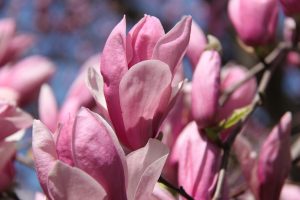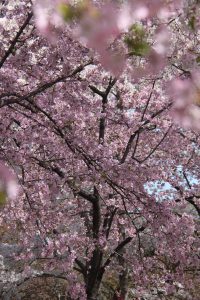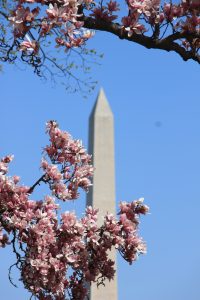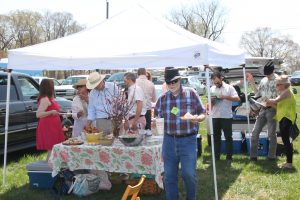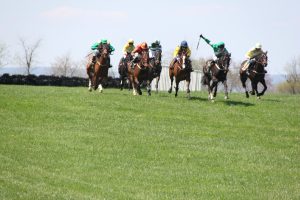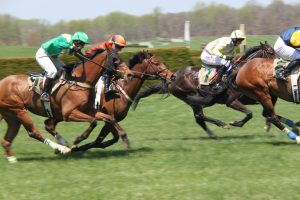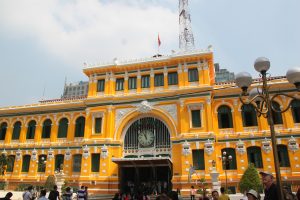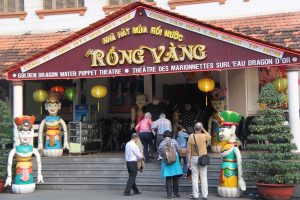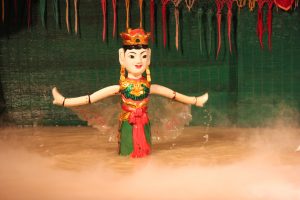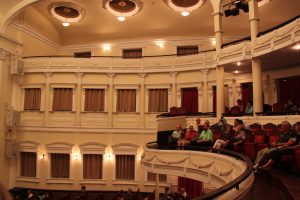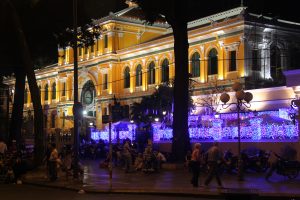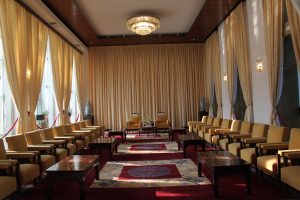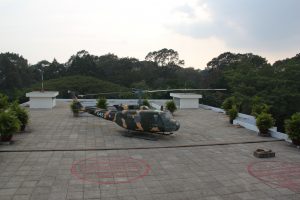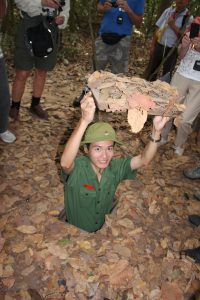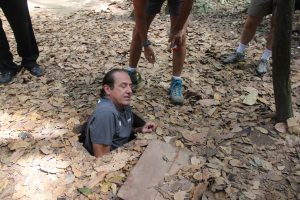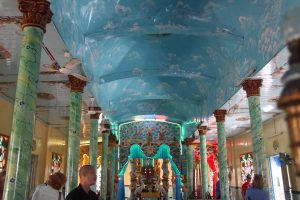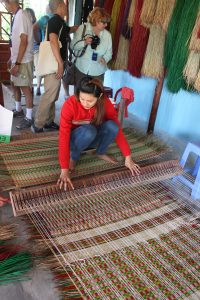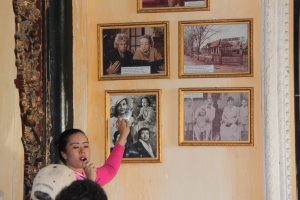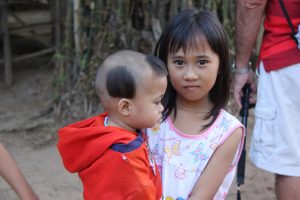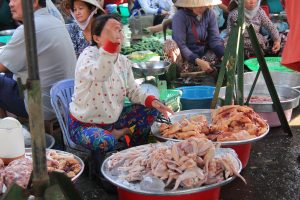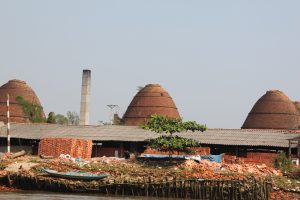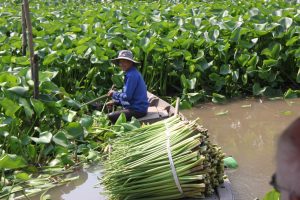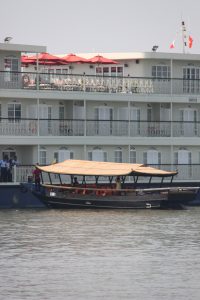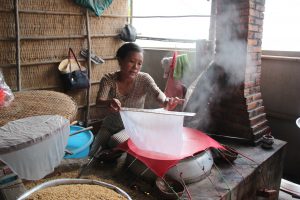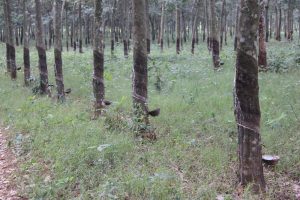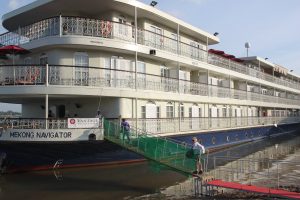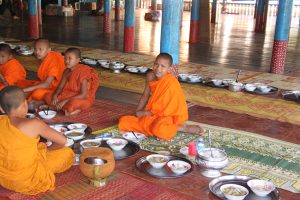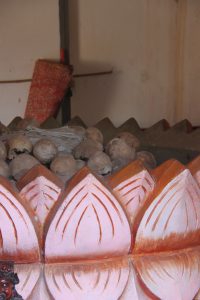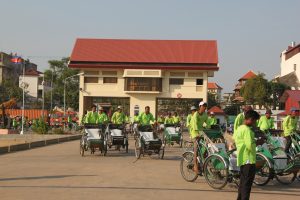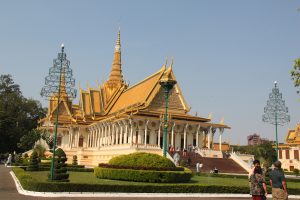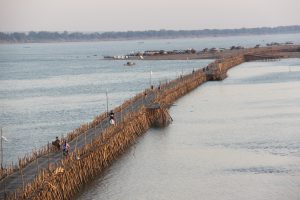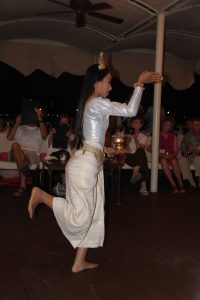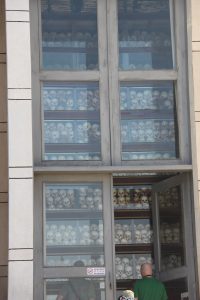September 2015
After our 3-week sailing adventure along the Dalmatian Coast of Croatia, we were set to begin the “overland” portion of our adventure. The 6 of us, (Julie and Roc, Nikki and Peter and Terry and Elaine), caught a bus from Split to Zagreb, Croatia. The trains do not move efficiently between these two cities, and so the “Express Bus” is a much better option. The bus was large and modern with coffee service aboard and a stop every two hours, (a 6-hour trip.) Along the way, we passed Roman aqueducts while traveling the “A1” – a very modern highway toll-road and lots of tunnels. Our driver also took the occasion to stop along the way to pick up his family members and gather his lunch bag from relatives. When we arrived at the bus terminal in Zagreb, we took a taxi into the center of Zagreb, and then had a short walk along a pedestrian-only area to our hotel – The Hotel Dubrovnik. This hotel was built in 1929 and our room was in the old, original part of hotel. We were located on the city’s Jelevic square – the center of town – and within easy walking distance to most major attractions of town. On the square, we sat outside and had dinner while watching the crowd that had gathered to celebrate Croatia’s win in Euro-Championship Basketball Tournament!

Sunday began with a huge breakfast buffet at the hotel and was following with a walking tour of town, taking in: the old Cathedral, the local vegetables market, the famous Stone Gate, and St. Marks Church with its “National” tiled roof.
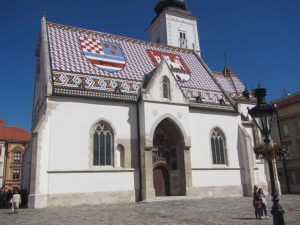
Roc climbed the ancient Fire Tower for a panoramic view of the “old town”. We then boarded a Funicular to travel back to town center when a cannon went off right above our heads, scaring us to death! It turns out that every Sunday at noon the cannon fires and we just happen to catch it while only yards away! We then made our way to the City’s Observation Deck and Restaurant where we had lunch and drinks while watching the changing of the guard in the city square from above. That afternoon, we took a long, walking U-shaped tour of the city’s parks, museums, and botanical gardens, ending up at the train station in front of a large set of fountains and museum. It was a beautiful day, and people were relaxing on the grass, reading books and soaking up the sun. On the way back to the hotel we came across a local food fair and enjoyed BBQ spareribs and local music. We returned to the hotel, went for a dinner of “volcano” pizza on the square and then met up in the Observation Deck for viewing the city’s lights at night. The day was polished-off with nightcaps in the hotel bar while meeting sports fans from the country of Georgia who were there watching Euro-Basketball, but were excited to talk about the upcoming IRB Rugby World Cup which we would be attending later this month.
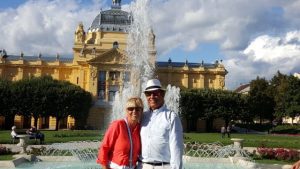
On September 7th, the 6 of us flew from Zagreb to Istanbul via Turkish Airlines. Although it was only a 2-hour flight, we received drinks, a nice sandwich, salad and chocolate mousse. Upon exiting the airport, our preordered limo met us at the airport and we headed into the city old town to the Skallion Hotel. We checked in and then headed for a walk, exploring Little Hagia Sophia, the Blue Mosque, the main Hagia Sophia and its associated obelisk and gardens. We then walked to a little restaurant located on a nearby rooftop (for the view of the city) for dinner of kabobs before wandering to a local Greek-Turkish restaurant for evening drinks and deserts.
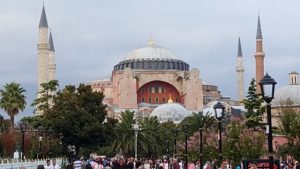
Tuesday was spent “walking the city” – starting in the morning, we took the local tram to the Karakoy district across “the Golden Horn” in search of the world’s best baklava at a restaurant named “Karakoy Gulluoglu”. The historic restaurant was 3 blocks behind the tram stop and it took us a while to find it, only succeeding after asking many locals for directions. We had seen a story on this establishment on the travel channel and decided to go and have a taste for ourselves. While there, we had 5 different kinds of baklava with a Turkish tea for 15 lire ($5), and it was all fantastic! Next we climbed a nearby narrow street up the hill to Galata Tower, where we rode an elevator and climbed to the observation deck around the top. From there, you could see the never-ending city stretching to the horizon. Next we took the tram back to the Sultanahmet, (mosque, palaces and obelisks), walking among the structures hoping to get into Topkapi Palace. However, it was “closed” on Tuesdays. We then headed for the Grand Bazaar, finding a Starbucks along the way, (and acquiring the “souvenir mug”). We walked throughout the Grand Bazaar, finding everything and anything, and purchasing some spoon and bowls as gifts. Outside of the bazaar, we stopped for lunch – a kebab wrap and a fresh-squeezed juice drink. Then, we wandered on to Istanbul University, – a treed and spacious campus surrounding the stunning tower Beyaal. It was also originally used as a city fire lookout, but now it is covered with cell and satellite structures, and used for traffic and weather advisories. Nearby, we visited a huge mosque at the top of the hill (the view was great) and saw Suleimon the Magnificent’s tomb. Back at the hotel, Peter and Roc went in search of bus tickets to get us to Varna, Bulgaria later in the week – an adventure that took them miles around town to find a Travel Agent! Dinner that night was a group affair at the local Greek-Turkish restaurant that we had drinks at the night before. We ordered “The Palace” – a large, mixed kebab platter that arrived with a lit candles located in each corner. The proprietor insisted it wouldn’t be enough, but it was plenty for the 6 of us, and it was delicious.
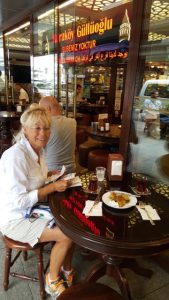
On September 9th, we arranged an all-day tour of Istanbul through the hotel. It started by on a bus collecting other adventurous people from their hotels, and then making our way to a waiting boat on “the Golden Horn.” We boarded the boat, and began a guided tour of “the Golden Horn” region before passing under the local bridges and into the Bosphorus Sea. We then traveled east along the European side of the Bosphorus, first seeing the old navy yard, several old palaces converted to modern hotels, and the Rumeli Fortress at the foot of the William the Conqueror Bridge. This is the narrowest point between the two continents at 624 meters. We turned around and then traveled the Asian Side of the Bosphorus, seeing homes that cost millions of Euros. Returning to the port, the tour continued with a short bus ride to Pierre Lottie Hill for a view of the city, followed by heading down the hill for a short cable car ride. Next, it was on to see a short, commercial, fashion show for leather jackets (Roc modeled!) and then on to lunch. Our tour lunch was a traditional meal of bread, lentil soup, salad, and mixed kebabs, with a sweet baklava for dessert. Our tour continued with a trip to the Dolmabahce Palace, once the home of Turkey’s last ruling Sultan, prior to his exile. It was built over a period of 13 years, and has the largest reception hall in the world! It is now a fully-restored museum with its original floors, draperies, furniture and glass chandelier from Britain and France. There was even a clock tower and Aviary on the grounds, along with Turkish cannons that were once the largest in the world. Our tour then continued by crossing the Bosphorus to the Asian side of Istanbul, and up to the top of Asian Hill for drinks and an overlook of the city. To get there we traveled over the largest Bosphorus Bridge – standing at 64 meters over the water and 1500 meters long (7th largest suspension bridge in the world!) Pedestrians are only allowed on the bridge a single day each year. Our tour ended with a ride back to the hotel for drinks and packing, before getting a quick carry-out from the local Burger King, which we ate while drinking wine in Elaine’s hotel room.
On September 10th, Peter and Nikki and Julie and Roc checked out of the hotel early to transport to the city’s bus station. Terry and Elaine would be flying out later to Budapest. Upon checking out, the Hotel Skallion gave us a nice box of candies as a “thank you” gift. The taxi took us to another part of town where the bus station was designed very much like an airport. We found our Gate (122) at Terminal 2, and waited for our Metro Busline bus to Bulgaria to arrive. While there, we watched a very orderly process of buses loading and unload, including an extended family who apparently unloaded their entire household from the bus luggage, (including dishes, clothing, and sleeping mattresses), which they proceeded to set in the middle of the road. Once we boarded the bus, the attendant collected all of our passports and tickets, later returning them to us after they had been entered on a ledger. Shortly into our 9-hour trip, we were serves a mid-morning snack of hot chocolate and raisin cake. After another hour and a half of travel, we exited the suburbs of Istanbul, and countryside finally became pastoral, dotted with crops of grains and vegetables. After a lunch and bathroom stop, we traveled a few more hours to the coast of the Black Sea where we finally arrived at the downtown bus station in Varna, Bulgaria – a popular Eastern European resort town that caters to Russian tourists looking for an inexpensive holiday. We caught a taxi to our hotel, The Panorama, located across the street from the beach at the Black Sea. After dropping our bags and admiring the view of the coast from our windows, we explored the local area for a grocery and pharmacy. With “shopping” take care of, we walked to the end of the local pier into the Black Sea and ate at restaurant that was built into an old, converted, grounded Galleon.
The next morning, we decided to walk-tour this historic town of Varna. In the center of “old town”, we strolled through open markets and Russian Orthodox Churches, and ended up at the region’s Archeological Museum, where 5,000 years of the city’s history were chronicled. We then made our way to the “Sea Garden” – a scenic vista park along the coast of the Black Sea with flowers, a zoo, an amusement park, monuments and lovely, tree-covered walks. Finally, we ended up at a public beach where Peter and Rocky took the occasion to take a swim in the Black Sea. After drying off, the group collected at a local beach bar for drinks, before returning to the hotel to prepare for dinner on a beach restaurant.
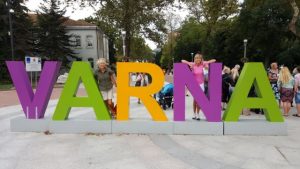
The next day, we checked out of our hotel and walked to the nearby train station for our trip to Bucharest, Romania – a 9-hour trip with beautiful scenery and interesting activities along the way. Crossing between the two countries was an exercise in transferring train engines and cars at the border and completing immigration aboard the train. The Dining Car was part of our train, but it was empty and unmanned making the decision to take lunch along with us a wise choice. Upon arriving in Bucharest, we walked to our nearby hotel and then began a late evening a search for dinner. After walking the wrong direction for a bit, we finally found a very nice Italian restaurant about two miles from our hotel.
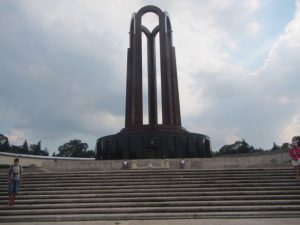
Sunday, September 13th was Roc’s birthday! We celebrated by walking to Old Town Bucharest and taking in the views of the remnants and ongoing restoration of the destruction remaining from World War 2 bombings. In spite of the work, the streets were lined with shops, cafes, street musicians and many tourists looking for bargains and exploring the historic sites. We ate lunch at a Greek Gyro shop and then walked to south of town to visit the Eternal Flame, National War Memorial and beautiful city parks. We even ran across the Romanian Rugby Federation Headquarters where preparations were just completed for the upcoming Rugby World Cup. We would be watching their team play against New Zealand in a few weeks in London. Later, we returned to Old Town and had celebrated Roc’s birthday with dinner at a traditional Romanian restaurant.

Monday’s weather was beautiful, and we took the occasion to walk north to city’s Arch de Triumph at Herastrau Park, which was beautifully landscaped with flowers and swans and lakes. We then returned to de Gaulle Piata for lunch – a piata that had been renamed for Hitler and Lenin during past occupations. After lunch, Roc and Julie walked through Park Kiseleff to Victory Square, and then onto Ion Voicu Park – a pretty little square surrounded by old mansions and populated with children playing.
Tuesday morning, we checked out and walked back to the train station for an early train to Budapest, Hungary. At the train station, we were the first people into McDonalds for breakfast when they opened at 4:30am. We then picked-up some KFC chicken strips to-go for lunch aboard the train. This trip was to be about 13 hours long, and we were a little worried about the growing Syrian Refugee crisis ongoing in the Region. During the long trip, the 4 of us played cards, ate food, and drank wine. This train was an “Express” and so there were only a few stops and one delay at the border, where the engine was again changed. We finally arrived at 7:00pm, squeezed into a taxi, and went for a ride to Buda side of Budapest to check-in at the Burg Hotel. This was an elegant little hotel, overlooking the Cathedral and the Fisherman’s Bastion. After unpacking, we walked 2 blocks down the street for a traditional Hungarian dinner of boar ravioli, chicken paprikash and cucumber salad.

Wednesday would be spent sightseeing in Budapest – a city that we have been to before, and one of our favorites. After a huge, buffet breakfast at the hotel, we met up with Peter and Nikki and walked to the Fisherman’s Bastion, down and around the Castle and to Government Offices for Peter to pick-up his new Hungarian passport. We then shortcut back through the tunnel under the Castle, where we crossed the Danube River on the famous Chain Bridge into Pest. Once there, we strolled through the pedestrian shopping area, stopping for drinks and shopping. Later that evening, we had dinner of traditional Hungarian Goulash, back on the Buda side of the river, in a local restaurant only a block from our hotel.
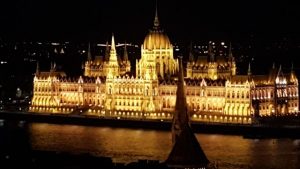
Thursday, September 17th was time to move on again to the city of Prague in the Czech Republic. In taking the train from Bucharest to Prague, one had to pass through Budapest anyways, so it was an opportunity to be taken advantage of. This train trip was a bit different, as in addition to several planned stops along the way, there were two unplanned stops for technical problems. Tickets were checked not only at every border crossing, but at every stop! In addition, police swept the train at each crossing, checking passports and identification in response to the Syrian Refugee crisis. The trip required us to cross first into Slovakia then into the Czech Republic. When we arrived, we left the train station and walked uphill to the hotel, only to find that we had been “bumped” from our reservations, and moved to a sister hotel around the corner. We were apologized to and told that the reason was that the local soccer team, AC Sparta, had a game in town and their hotels was fully booked. After settling in, we walked into the center of town for a dinner of pork ribs and goulash.
The next day, we explored Prague by walking first to Old town and then across the Charles Bridge to explore the Cathedral, Palaces and Castle on the other side. We sampled the street food and local wines and beers. We ended the day with dinner in an old, rustic pub with kolbasz (a type of sausage) and rabbit legs.

On Saturday, we walked through Old Town to finish our shopping and then stopped at a little island beneath the Charles Bridge where Nikki and Peter put a lock to demonstrate their love. We then decided to hike up to the old city wall and observatory at top of the hill. The view from there was beautiful, but we were disappointed that no one can walk on the top of old wall. So, we had a drink before trekking back down the hill and back to island for a traditional Czech meal of goulash, cheese board, pasta, and chicken escalloped with sauerkraut. After lunch we went in search of the local football jerseys for AC Sparta, finally finding them in the local Nike Store. After picking up gifts and jerseys, we walked to the Dancing Towers for a drink on the rooftop and to watch the sunset. Then, we went to dinner at a local patio waterfront restaurant, complete with heaters and blankets for the cooling evening.
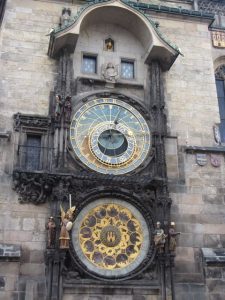
Sunday, September 20th would be our last breakfast together with Peter & Nikki, before we headed to the airport for our flight to London. Our trip of Eastern Europe was over and took us on boats, planes, buses and trains as we got a chance to experience people and cultures that we had long wanted to do. But now, it was time to switch gears, and to get ready to experience the 2015 IRB Rugby World Cup with friends in London.
